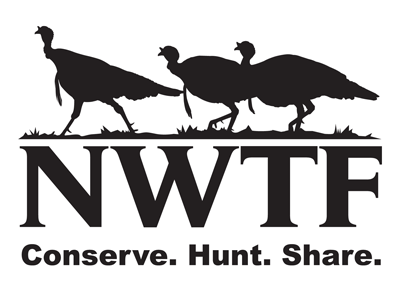Black Kettle WMA Turkey Roosting Areas Get New Life with Three-Partner Project
National Wild Turkey Federation 11.04.13

The Black Kettle Wildlife Management Area in Roger Mills Co. is more valuable for
turkeys today than it was just a few months ago thanks to a joint project conducted
recently by state and federal governments and an important conservation group.
The effort involved using two large machines to “chew up” the overgrown understory
of 85-100 acres of cottonwood stands that would otherwise be prime turkey roosting
habitat.
“This was a joint effort between the Oklahoma Department of Wildlife Conservation,
the U.S. Forest Service and the National Wild Turkey Federation,” said Scott Parry,
Wildlife Department biologist stationed over Black Kettle WMA. “The reason we want
to do this is that Rio Grande turkeys like to roost in mature trees, primarily cottonwoods.
The cottonwoods in these areas were getting grown up with mostly eastern red
cedar and brush. I think over the next few years, with a little bit of maintenance
on these areas, we’ll see these sites being long term usable turkey roosting areas
and generally good turkey habitat.”
The land-clearing process, called “mastication,” removes the brush and undesirable
trees around the stands of cottonwoods, allowing turkeys to navigate the newly opened
ground more efficiently and access the roosting sites in the cottonwood limbs above.
Before the project, the understory was very dense with brush, red cedar and other
undesirable growth that reduced wild turkeys’ ability to use the otherwise ideal
habitat.
“Now, turkeys can immediately start making use of the area,” Parry said.
Additionally, a freshly mulched ground is left behind that can receive ample sunlight
to grow a range of native grasses and weeds, or “forbs.” Next spring, when vegetation
begins to sprout, the new growth should help attract insects that wild turkeys
eat.
The Black Kettle WMA covers over 30,000 acres near Cheyenne. Located in the mixed
grass prairie, it is made up of a mixture of rolling sand hills, red shale hills
and wooded bottoms. It is owned by the U.S. Forest Service, an agency of the U.S.
Department of Agriculture that manages public lands in national forests and grasslands.
The Forest Service partners with the Wildlife Department to offer the area as a
WMA for sportsmen.
“This is a real exciting project that we have going on here where we’ve grouped
up our resources and our energy with Forest Service, the state Wildlife Department
and the National Wild Turkey Federation to do some turkey roost regeneration areas,”
said Tom Smeltzer, district ranger for the U.S. Forest Service who oversees Black
Kettle National Grasslands. “It should make a real neat place for the sportsmen
of Oklahoma.”
More information on the Forest Service can be found at www.fs.fed.us.

